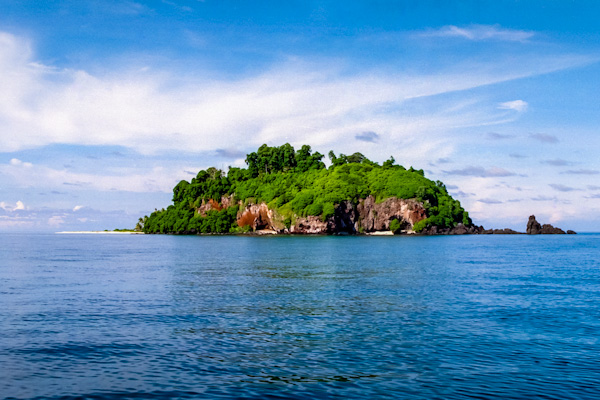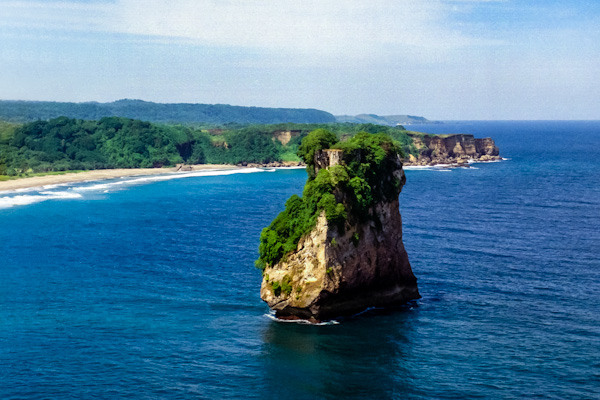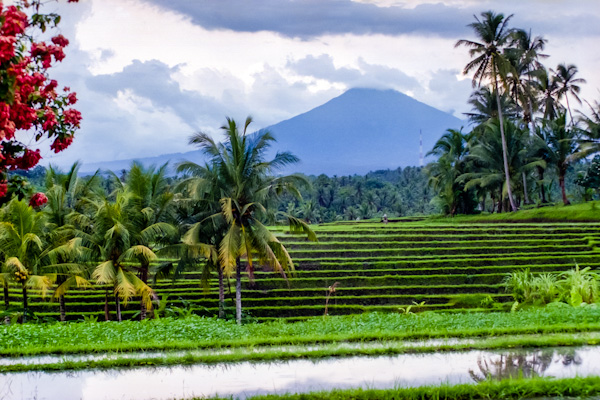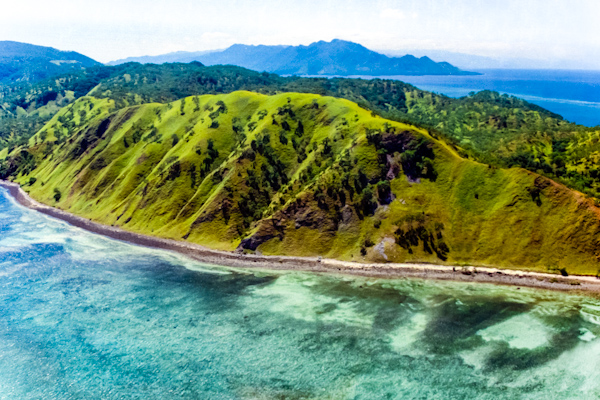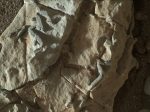South of Flores, between Sumbawa and Timor there is an island where the traditional customs are among the best preserved in Nusa Tenggara. This is Sumba, a relatively large island, 11.153 sq. km. with a population that reaches about 600.000, the name of the capital is Waingapu.

Much of the island consists of a flat, elevated plateau about 600m above sea level, where the coast is mostly steep and rocky. The island is divided in two regions, west and east, along ethnical and cultural borders.
Up to the 20th century there has been periodic warfare here between a large number of rival kingdoms. The old wars are remembered every year during the Pasola festival, but like in 1992 the fights can be too realistic, then two villages went to war and several people were killed and a large number of homes were burned down.

Today much of the population are Christian, as well as some Muslims, while a large minority still adhere to the animist “marapu” religion. Sumba is separated from the other islands in the region by deep waters, and due to limited natural resources it has not been much influenced by the rest of the world. An old pagan culture can still be found here, unlike the rest of Indonesia which has been greatly influenced by the large world religions and their culture.
History
According to an old myth the first humans came down to Sumba on a ladder from heaven and settled on Tanjung Sasar on the north side of the island. Another myth says that Umbu Walu Sasar, one of the two Sumbanese ancestors, was driven away from Java and brought to Sumba by the gods. He also settled on Tanjung Sasar. The other ancestor, Umbu Walu Mandoko, came by boat and settled on the east side. The fact is that the people here are a mix of Malay and Melanese, while the language is related to eastern Sumbawa, western Flores and Sawu. The death and burial ceremonies have significant similarities with Tana Toraja on Sulawesi.

Sumba was under control of the mighty Majapahit dynasty from Java in the 14th century. After the fall of Majapahit the island was ruled from Bima on Sumbawa and later Gowa on south Sulawesi. The society was however most influenced by the internal wars, even if there still was mutual economic dependency between the rival kingdoms. Horses, timber, betel nuts, rice, fruit and ikat was heavily traded between the various districts.

. (Photo Bjorn Grotting)
The Dutch did not find any commercial possibilities here at first and payed little attention to Sumba before they started export of sandalwood in the 18th century. Before the discovery of penicillin sandalwood was the only known cure for venereal diseases, and was an expensive commodity that was exported to Europe, China and Arabic countries in large quantities. The trade was constantly interrupted by internal wars, and in 1906 the Dutch invaded Sumba and placed it under direct military rule. A civilian administration was set up in 1913 where the Dutch ruled through the reigning Sumbanese nobility. The native rulers were not accepted by Indonesia when the republic took control of the island in 1950, but many became government officials and in that way they and their families still have much influence.
West Sumba
The western part of Sumba is green and fertile in the wet season. It has a mixed population with two different languages, many still live in their traditional thatched huts. While East Sumba attracts tourists due to it’s lovely ikat-textiles, West Sumba can offer more exotic traditions with unique houses, ceremonies and tombs. A traditional village typically consists of two rows of tall houses, with a square between. In the middle of the square there is a flat stone with another flat stone at the top of it. Here offerings are made to the spiritual forces that protects the city (marapu). Similar stones can be found in the fields where offerings are made in relation to planting and harvesting. On the open square there is often stone slab tombs of important ancestors.

In former days the heads of killed enemies would be hung in a dead tree in the village square, called “andung”. It is common today for tourists to visit some of these villages, preferably with a local guide to avoid any offending behavior. You will often be asked to donate a small amount of money, another custom is to offer betel nuts. It is a big offence to say no if you are offered a betel nut, in former days this was a declaration of war! Just accept it and put it away if you don’t like to chew it like the locals.
East Sumba
East Sumba has a different climate, it is more dry and mountainous, and the people here belong to one single ethnical group with one common language. Waingapu, the capital, is located here and is a hub for transport to and from the island. There are some facilities here, but the main attractions are located west and southeast on the island. Some traditional villages are located southeast of Waingapu and can be visited on a daytrip from there. This part of Sumba is best known for the “ikat” produced here, this is a woven textile that can take weeks and even months to produce because of a complicated production process.

Traditionally ikat was only used for special ceremonies and only by members of the highest clans and their personal attendants. During important funerals the corpse was dressed in the finest textiles to make a good appearance in the afterlife, and piles of extra textiles was often sent with the dead as well. Later the Dutch started to export ikat to Europe and Java, where it quickly became very popular. Other products from here are horses and cattle. Horses are still used for transport on Sumba and is a symbol of high status, the large grass fields in the interior of the island are well suited for horse raising.

The island is famous for its megalithic tombs and war rituals. A well known ritual is “pasola” were hundreds of men on horses throw spears at each other. The tip of the spears are cut off, but serious accidents, even deaths, occur frequently. The season to experience this festival is in February to March, it will take place in four different districts to satisfy the gods and bring a good harvest. The exact date and time is depending on the arrival of the small “Nyale” fish to the coast (also see Kuta, Lombok). The priests will study the fish and from it’s behavior predict the outcome of the harvest. When this is done the Pasola festival can begin, the fights will usually start at the beach and then move further inland.

There are not many facilities for visitors on the island, if you go here you must be prepared to live under primitive conditions. But the island is an unique opportunity to experience an authentic culture not found anywhere else.

